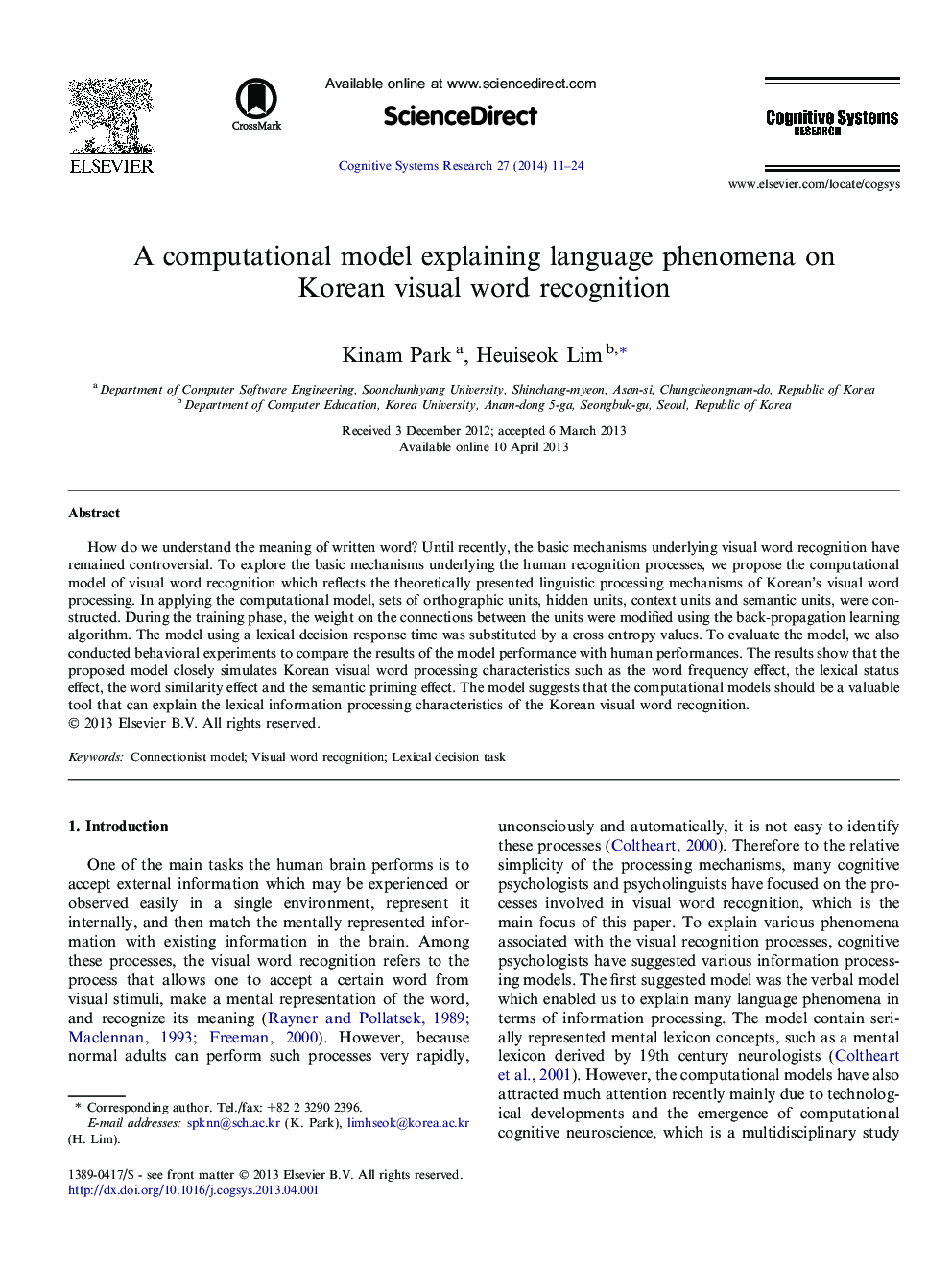| Article ID | Journal | Published Year | Pages | File Type |
|---|---|---|---|---|
| 6853866 | Cognitive Systems Research | 2014 | 14 Pages |
Abstract
How do we understand the meaning of written word? Until recently, the basic mechanisms underlying visual word recognition have remained controversial. To explore the basic mechanisms underlying the human recognition processes, we propose the computational model of visual word recognition which reflects the theoretically presented linguistic processing mechanisms of Korean's visual word processing. In applying the computational model, sets of orthographic units, hidden units, context units and semantic units, were constructed. During the training phase, the weight on the connections between the units were modified using the back-propagation learning algorithm. The model using a lexical decision response time was substituted by a cross entropy values. To evaluate the model, we also conducted behavioral experiments to compare the results of the model performance with human performances. The results show that the proposed model closely simulates Korean visual word processing characteristics such as the word frequency effect, the lexical status effect, the word similarity effect and the semantic priming effect. The model suggests that the computational models should be a valuable tool that can explain the lexical information processing characteristics of the Korean visual word recognition.
Related Topics
Physical Sciences and Engineering
Computer Science
Artificial Intelligence
Authors
Kinam Park, Heuiseok Lim,
